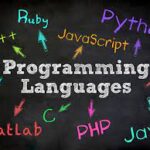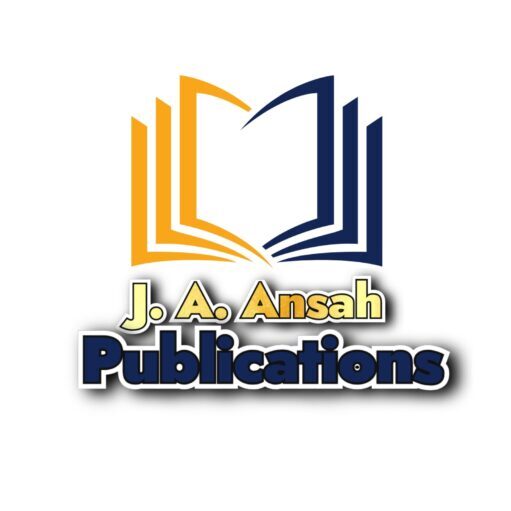INSTRUCTIONAL APPROACHES TO TEACHING COMPREHENSION AND SUMMARY
Instructional approaches or strategies are techniques teachers use to help students become independent, strategic learners. These strategies become learning strategies when students independently select the appropriate ones and use them effectively to accomplish tasks or meet goals (Alberto &Troutman, 2013).
The following methods, among others, could be applied by teachers or instructors in teaching comprehension and summary:
1. Active reading: This is the act of reading to understand and evaluate a text. It’s often described as ‘reading with a purpose’. This helps learners; children and people of all ages broaden their understanding of a text or knowledge of a subject. There are lots of different ways to develop active readers in the classroom and at home. Here are six active reading strategies that are applied in education:
I) Visualisation – Building a picture in your mind’s eye as you read a story or text.
ii) Summarising – Condensing the main details of the story using your own words.
iii) Inferencing – Reading between the lines at the subtext of the story.
iv) Comprehension – Demonstrating what you understand from reading the text
v) Metacognition – Asking questions like, ‘What do I previously know about the topic?’
vi) Find the meaning – Read on or read back to discover the meaning of words.
2. Anticipation guide: The anticipation guides strategy requests students to express their views about ideas before they encounter them in a text or unit of study. Completing anticipation guides helps students recognise and connect to themes that surface in their learning. Use this strategy at the beginning of a unit or before engaging with a text. You may also review anticipation guides at the end of a lesson or unit as a way to help students reflect on how learning new material may have influenced their opinions, perhaps by reinforcing previously held beliefs or by causing ideas to shift.
3. Balanced literacy: It is a curricular procedure that incorporates various modalities of literacy instruction, which are aimed at guiding students towards proficient and lifelong reading. The balanced literacy approach is characterised by explicit skill instruction and by the use of authentic texts. It has the following methods:
Method 1: read alouds
Method 2: shared reading – Students are reading a common text with teacher support.
Method 3: reading mini-lesson– Direct and explicit instruction. Method 4: independent reading
Method 5: conferring – The teacher meets with students individually to discuss and document specific needs and the progress of the individual reader.
4. Collaborative student learning: This is a set of teaching and learning strategies promoting student collaboration in small groups in order to optimise their own and each other’s learning.
5. Didactic questions: They are usually factual questions that begin with: what, when, where and how. They tend to have a single answer which demonstrates lower order thinking such as knowledge and understanding.
6. Direct instruction: Direct instruction is a general term for the explicit teaching of a skill set using lectures or demonstrations of the material to students.
7. Drill or practice (synonym: repetitive learning): This is referred to as a technique of instruction characterised by systematic repetition of concepts, examples and practice problems.
8. Guided practice/guided reading: It is a vital step, especially for our struggling students, and happens after the teacher has taught and modelled the skills to learners and before setting them to freely try it on their own.
Guided reading is an instructional practice or approach where teachers support a small group of students to read a text independently. During guided practice, the student attempts the target skill or strategy with assistance.
9. Modelling: This is an instructional strategy in which the teacher demonstrates a new concept or approach to learning and students learn by observing.
10. Prompts: A prompt is an additional stimulus that increases the probability that will occasion the desired response.
11. Reciprocal teaching/reading denotes an instructional approach in which students become the instructor in small group reading sessions. Teachers model, then help students learn to guide group discussions using four strategies: summarising, question generating, clarifying and predicting. Once students have learned the strategies, they take turns assuming the role of the teacher in leading a dialogue about what has been read. Before reciprocal teaching can be used successfully by students, they should been taught and had time to practise the four strategies that are used in reciprocal teaching (summarising, questioning, predicting and clarifying).
12. Reflective discussions stimulate students to think and talk about what they have observed, heard or read. The teacher or student initiates the discussion by asking a question that requires students to reflect upon and interpret what they read. As students question and recreate information and events in a story, they clarify their thoughts and feelings. The questions posed should inspire students to relate story content to life experiences and to other stories.
These questions will elicit personal interpretations and feelings. Interpretations will vary, but such variances prove that differences of opinion are valuable.
13. Role playing: This allows students to take risk-free positions by acting out by acting out characters in hypothetical situations. This is typically appropriate for helping students to learn intonation (Test 7).
14. Scaffolding: The teacher models the desired task, and then gradually shifts the responsibility to the student.
15. Self-monitoring strategies: These are plans used to increase independence of the student or learner by helping them to learn or practice autonomously.
16. Simulations: These are instructional scenarios where the learner is place in the ‘world’ defined by the teacher. The teacher controls the perimeters of this world and uses it to achieve the desired instructional results.
17. Story mapping: A story map is a technique that uses a graphic organiser to assist students learn the elements of a book or story. By identifying story characters, plot, setting, problem and solution, students read cautiously to learn the details.
18. Think-alouds have been termed as ‘eavesdropping on someone’s thinking.’ With this approach, teachers verbalise aloud while reading a text orally. Their verbalisations comprise describing things they are doing as they read to monitor their comprehension. The objective of the think-aloud strategy is to model for students how skilled readers construct meaning from a text.
19. Vocabulary pre-teaching/frontload vocabulary: The primary consideration for pre-teaching vocabulary should be which words need to be explained for students so that those words don’t get in the way of comprehension (Beck, McKeown & Kucan, 2008). Teachers may
introduce both the more unfamiliar specialised content area words that will be used in the lesson as well as non-specialised academic words used when talking about the content or during or after the reading of a text.
SOURCE: ENGLSH COMPREHENSION AND SUMMARY BY J.A. ANASH
- The Digital Dialects: How Programming Languages Shape Our Modern World
 Post Views: 57 By Bright Atsu Aditse The era of a one-language-fits-all approach is long gone. The modern philosophy is “using the right tool for the right job.” This specialization allows for greater efficiency, performance, and developer productivity. Let’s explore how these languages are applied across the key domains of modern technology. 1. The Web:…
Post Views: 57 By Bright Atsu Aditse The era of a one-language-fits-all approach is long gone. The modern philosophy is “using the right tool for the right job.” This specialization allows for greater efficiency, performance, and developer productivity. Let’s explore how these languages are applied across the key domains of modern technology. 1. The Web:… - The Dark Side of Human Rights: Freedom or a Gateway to Spiritual Corruption?
 Post Views: 44 By Michael Nyavi (Sir Michael) Human rights, as enshrined in international law, were originally meant to protect the dignity and freedom of every human being. The Universal Declaration of Human Rights (UDHR) of 1948 was drafted to prevent oppression and injustice after the horrors of World War II. However, in recent decades,…
Post Views: 44 By Michael Nyavi (Sir Michael) Human rights, as enshrined in international law, were originally meant to protect the dignity and freedom of every human being. The Universal Declaration of Human Rights (UDHR) of 1948 was drafted to prevent oppression and injustice after the horrors of World War II. However, in recent decades,… - The Myth of Meritocracy in Ghana: A Critical Examination
 Post Views: 148 By Ametepe Michael “Meritocracy! The Modern Norm” Meritocracy is a political system of governance in which rewards, opportunities, and positions of power are distributed based on individual talents, efforts, and achievements, rather than on the basis of wealth, privilege, or other factors. In a meritocratic system, individuals are judged on…
Post Views: 148 By Ametepe Michael “Meritocracy! The Modern Norm” Meritocracy is a political system of governance in which rewards, opportunities, and positions of power are distributed based on individual talents, efforts, and achievements, rather than on the basis of wealth, privilege, or other factors. In a meritocratic system, individuals are judged on… - The Role of the Church in Combating Corruption: The Church Cannot Remain Mute
 Post Views: 48 By Michael Nyavi (Sir Michael) Introduction Corruption has become a cankerworm eating deep into the fabric of many nations, including Ghana. It weakens trust, destroys institutions, and deepens poverty. In a country where over 70% of the population identify as Christians, the Church cannot remain silent. With its moral authority and wide…
Post Views: 48 By Michael Nyavi (Sir Michael) Introduction Corruption has become a cankerworm eating deep into the fabric of many nations, including Ghana. It weakens trust, destroys institutions, and deepens poverty. In a country where over 70% of the population identify as Christians, the Church cannot remain silent. With its moral authority and wide… - Changing the Script: How Applied Behaviour Analysis (ABA) Is Empowering Learners and Transforming Classrooms
 Post Views: 51 By James Attah Ansah NB: First published with Modern Ghana on 22nd September 2025 At first, all Kormi did was scream. He screamed when he was asked to hold a pencil. He screamed when other children got too close. He screamed when the teacher smiled at him. At five years old, he…
Post Views: 51 By James Attah Ansah NB: First published with Modern Ghana on 22nd September 2025 At first, all Kormi did was scream. He screamed when he was asked to hold a pencil. He screamed when other children got too close. He screamed when the teacher smiled at him. At five years old, he…



